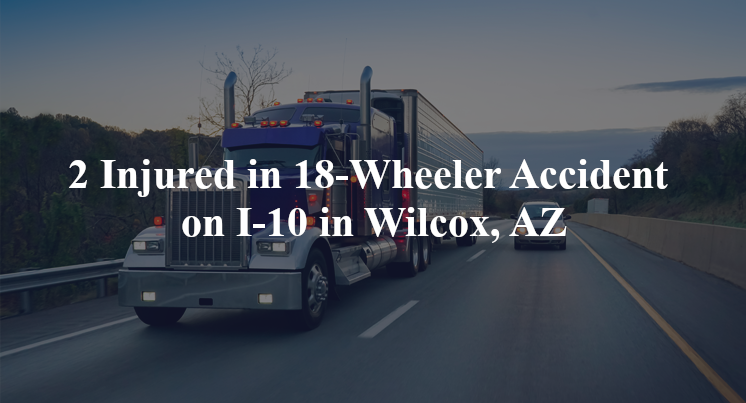2 Injured in 18-Wheeler Accident on I-10 in Wilcox, AZ
Wilcox, AZ — March 27, 2025, Two people were injured following an 18-wheeler accident that occurred at around 7:00 P.M. on I-10.

An investigation is underway into an 18-wheeler accident that left two people injured during the evening hours of March 27th. According to official reports, an accident involving two 18-wheelers occurred in the eastbound lanes of I-10 near Taylor Road, though the cause and circumstances of the crash are still being investigated.
When emergency crews arrived on the scene they found that the drivers of both trucks had sustained serious injuries, and one of them was trapped in their vehicle and required the jaws of life in order to extricate them, after which both individuals they were transported to the hospital for treatment. It remains unclear at this time what caused the accident, and the identities and status of the injured drivers remains unknown, however as authorities continue to investigate more details may be released in the future.
Commentary by Attorney Michael Grossman
When a crash involves two 18-wheelers, especially on a major interstate like I-10, it's a clear signal that something went seriously wrong. These vehicles are built for long-haul durability, and professional drivers are trained to avoid exactly this kind of outcome. So, when two of them end up crashing, it raises immediate questions—not just about what happened at the scene, but about what led up to the collision in the first place.
One of the first things that should be done in a crash like this is to secure and analyze the Electronic Control Modules (ECMs) from both trucks. These devices can provide critical information about speed, braking, throttle use, and gear shifting in the moments before impact. While ECM data won’t tell the whole story, it’s one of the clearest windows into how the vehicles were being operated and whether either driver was reacting to a sudden hazard or making a maneuver that contributed to the crash.
Beyond that, there needs to be a close look at the drivers’ hours of service. Were they near the end of a long shift? Were they pushing to meet a deadline? Fatigue is one of the most common contributors to commercial vehicle crashes, and it’s not something that can be seen just by looking at the wreckage. Driver logs, dispatch records, and GPS data all need to be part of the investigation.
Vehicle maintenance is another key piece. If a tire blew out or a brake system failed, that might not be visible without a detailed mechanical inspection. Those failures could point to lapses in regular maintenance or inspection protocols—responsibilities that often fall on the trucking companies themselves.
What concerns me is that, in many of these cases, the official investigation doesn’t go beyond the crash scene. That’s not necessarily anyone’s fault—most authorities simply don’t have the time or resources to pull ECM data, analyze logbooks, or investigate company maintenance policies. But without that deeper work, important facts can be missed, and the true cause of the crash may never come to light.
In a collision between two 18-wheelers, there’s too much at stake to settle for surface-level answers. The people affected by the crash—and the public sharing the roads with these trucks—deserve to know what really happened and why.

“These are essential reads for anyone dealing with the aftermath of a truck wreck”– Attorney Cory Carlson